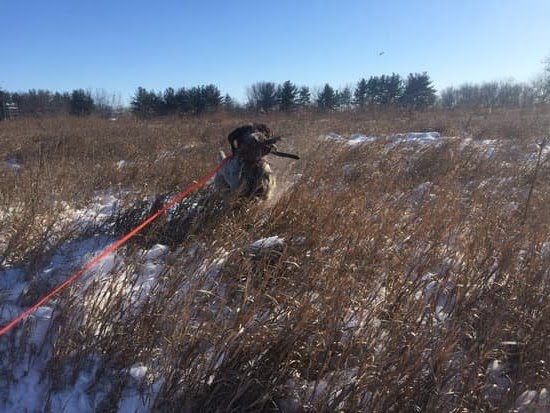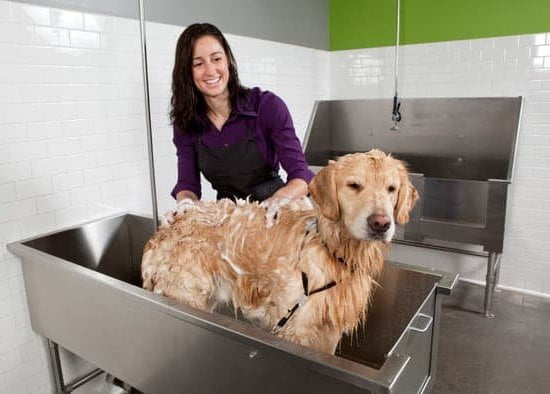Introduction
Getting your dog ESA training from a professional is important for many reasons. Professional guidance can ensure that your pup learns the necessary skills to make it a happy and well-adjusted member of your family. Not only will this professionally trained behavior benefit you and your family, but it will also make sure your pup understands their place in the pack as well as what role they should fulfill. Furthermore, professional training can help to create a calming and secure atmosphere within the home and prevent any potential future issues with aggression or anxiety. Additionally, professional training gives you a better chance of achieving desired behaviors from your pup more quickly. Ultimately, professionally trained behaviors give you, your canine companion, and every other person who interacts with them a greater sense of peace of mind knowing that they are behaving responsibly in different environments.
Different Types of Professional Dog Training Available
If you are looking for a professional to train your dog, there are several types of training options available. Starting with the most basic training approach, obedience classes can teach your pup how to properly respond to commands such as ‘sit’, ‘stay’ and ‘heel’. Advanced courses can also be taken for further information on behaviors like staying away from jumping up on people or pulling on the leash. Rally obedience focuses more on speed and accuracy and is preferable if you plan on taking part in agility competitions. For those dogs who need a more focused approach due to a fear or behavior (such as aggression), private trainers can provide an intensive one-on-one session tailored to the specific needs of your pet. Dog behaviourists or canine behaviour therapists specialize in problem behaviours, so if none of the other training options seem appropriate it may be useful to consider this route. In addition, some services offer group classes that allow owners to get involved not only in teaching their pups but also getting suggestions from experienced instructors in a fun but controlled environment. Whatever type of training you choose to start your journey with it’s important that you find a qualified instructor who has experience working with the breed of dog that you have and keep your pet’s age, temperament and any medical issues in mind when deciding which route is best suited for them.
What Makes Professional Training Different from DIY Training
Professional dog training offers numerous advantages compared to DIY (Do-it-yourself) training. A professional trainer is trained in positive methods and has experience teaching dogs of different ages and breeds, so they can help you modify your approach if it isn’t working. Professional trainers evaluate your pup on an individual basis and will be able to cater their methods accordingly. Moreover, they have detailed knowledge of canine body language and behavior which allows them to spot signs of discomfort or frustration and adjust the session in order to avoid reinforcing the wrong behaviors.
Additionally, a professional trainer can offer recommendations regarding what types of rewards will be best for Esa’s specific needs; they can also provide resources for further reading materials and address any questions that may arise during the training process. Furthermore, a professional dog trainer will provide accountability not found with DIY training because there are concrete goals set out at the start of each session as well as periodic check-ins as milestones are met. With regular practice over time, this will help create a stronger bond between you and your pup, thus ensuring that both you and Esa get the most out of the experience.
Identifying Your Goals for Professional Dog Training
Before searching for a trainer for your dog, Esa, it is important to identify your goals. If you don’t know what you want from the training process, it will be difficult to find a professional that fits your needs. For example, do you want to focus on basic commands such as sit and stay? Do you want to increase socialization skills with other dogs and people? Are there specific behavioral issues like aggression or jumping that need to be addressed? Knowing what kind of training your dog needs will help narrow down your search for a qualified professional.
Once you have identified your goals, take time to research different trainers in your area. Ask family and friends if they have used any local professionals or their recommendations. Look at the websites of different organizations and ask questions about their methods and credentials. If possible, request references from past clients. Choosing an experienced trainer who uses humane methods and is knowledgeable on the breed characteristics of Esa will set him (and you) up for success!
How to Choose the Right Dog Training Center or Trainer
When looking to get your dog Esa training, it is important to consider various factors. One of the primary factors is to decide on what kind of training you want your pet to receive. Is your goal to teach him basic obedience commands such as sit and stay, or specific skills such as agility or advanced tricks? Knowing what type of training you wish to receive will help you narrow down your search.
Other things to consider when choosing a trainer are their experience and certification, price, location and schedule availability, methods used during training, reviews from past clients and the duration of classes. Experienced trainers will be able to provide specialized advice for your particular pet that can help you achieve quicker results than if done solo. Additionally, trainers dedicated solely towards canine learning and behavior will have knowledge about how certain breeds learn best, ensuring that everyone involved in the process has an enjoyable experience. Price may also be an essential deciding factor for some people; research should be done in advance to ensure that locally available packages work within their budget.
Once potential centers or trainers have been determined from all the above criteria, it can be helpful to go tour facilities if possible or ask for references from current students or staff members who may be able to give detailed feedback about their experiences. With so many options available when deciding where and who trains dogs like yours these days, make sure not to rush into anything but rather take the time to find ideal fit who meets all requirements while offering high quality lessons at an affordable cost!
Common Training Techniques and Methods Explained
Getting your dog Esa trained will involve teaching them basic obedience commands, addressing any problem behaviors, and educating owners on how to take better care of their pet. For dogs of all ages, there are many different training methods that can be used depending on the individual dog’s personality and learning style, as well as the goals of the owner.
Positive reinforcement is one popular method of training that owners often use with dogs who respond best to positive reinforcement such as food rewards and praise. For example, if a dog behaviors in a way that you approve of, you can give them a treat or verbal praise. This method helps to build trust between a dog and their human companions while encouraging desirable behavior.
Reward-based training is another effective technique for teaching your Esa to behave correctly. In this type of training, you reward the desired behavior with something they enjoy such as verbal praise, treats or toys. This emphasizes the underlying message to your pet that they will get something good if they do the right thing. This can also include clicker training where an audible cue such as a clicker is used to mark the correct behavior so that it can be reinforced.
Other popular methods include tugs-of-war games and chasing activities which help build physical coordination and mental stimulation in addition to providing an outlet for active play time for both owners and dogs alike. Clicker or whistle-based commands are also great ways to teach your Esa specific cues or commands without having to use vocal demands or forceful discipline techniques. Finally, there are force-free techniques such as crate training that allow you to limit access to certain areas of your home while still allowing your pet some freedom within their designated area during rest periods and when away from home. Ultimately every dog is different thus there may be various techniques best suited for particular dogs’ temperaments and situations; consulting an experienced trainer or animal behavior specialist may help ensure success when attempting any kind of new Esa training approach.
Crafting an Effective Training Plan for Your Dog
When it comes to getting the best out of your dog Esa’s training, it is important to have a well-crafted plan in place. First and foremost, establish clear goals for what you would like your dog to accomplish. Think about the skills and behaviors that you would like your dog to learn or exhibit, as well as any other tasks that you would like your dog to be able to carry out. Write these down so they can serve as reference points throughout the training process.
Secondly, decide on a timeline for achieving these goals. This will help you stay organized while organizing the steps needed to reach those goals in proper sequence and keeping track of progress made. Consider how often you are able to dedicate time for practice sessions each week and how long those sessions should last based on your dog’s concentration span.
In addition, think about which training methods you want use with Esa – there are a variety of approaches when it comes to canine training ranging from clicker training and positive reinforcement methods, to more formal obedience schooling with instruction from an animal trainer or coach. Additionally, it might be beneficial for your pup if they attend doggie daycare where they can learn from being around other dogs while interacting in group playtime activities.
Finally, keep a detailed logbook recording all progress related data – such as date of session/activity, duration of activity and what was practiced – this will make it easier for you in the long run when evaluating how far along you are in reaching specific milestones pre-determined by yourself. Taking all these steps into account should provide a firm foundation for doing successful dog training with Esa!
Tips on Preparing Your Dog for Training Sessions
Before beginning any kind of obedience training with your dog, it’s important that you understand the Adverse-Proximity Effect (APE). This phenomenon occurs when a dog shows fear, aggression or other inappropriate behavior toward people who approach them from behind. To prevent this from happening, you should do some preparatory work before taking your dog to an obedience class.
To start your preparation for success with your dog at an Esa training session, slow introductions are key. Take the time to help your pet become familiar with its environment and the humans involved in their training session. Slowly allow others to come up to your pup at their own pace and give them treats and rewards for friendly behavior. This will build a positive association between the people around them and create trust in their instructors.
It’s also important to make sure that you take care of all of your dog’s basic needs before starting a training program. Ensure they have gone on walks or hikes prior so that they have had a chance to get rid of excess energy and focus better on receptive learning activities during the course. You should also ensure that they are well-fed, as this can aide concentration levels when it comes time to begin the session. Finally, always bring plenty of treats whenever possible as rewards – these can reinforce positive behaviors while positively reinforcing skills being taught in the class!
How Professional Training Helps with Behavioral Issues
Professional dog training classes can provide a great way to help owners address and manage their dogs’ behavioral issues. These classes provide owners with the opportunity to learn more about their dog’s needs, understand their behavior, and gain strategies for how to approach and correct any problem behavior.
A professional trainer will be able to identify specific areas of concern related to your dog’s problem behaviors, such as sensitivity or aggression. With an understanding of your particular pup’s challenges, they will be better equipped to assess the impact that those issues are having on your daily routine and design an appropriate training plan tailored to your pup’s unique challenges.
Training professionals will often focus on teaching owners how to use positive reinforcement techniques when working with their pups, which can have very powerful effects on modifying problematic behaviors. Additionally, you’ll learn about tools and equipment that may be suited for your pup’s personality and needs such as muzzles or long lines for safety during walks in crowded places like parks. Working one-on-one with a professional will also enable owners to identify any underlying health concerns that might be causing trouble or compounding existing ones.
Overall, enrolling in a relationship-based professional training class is a great tool for pet parents struggling with their pups’ behavioral issues. Such classes usually last between four to eight weeks and can greatly improve the quality of life of both pet parents and dogs alike!
Strategies for Maintaining Training Progress
Getting your dog Esa the necessary training can be a difficult task if you are unsure of where to look. Thankfully, there are many different options available to those looking for outstanding training services. Depending on what goals you have in mind, your best bet is to look into local pet stores and specialized schools or trainers.
At these training centers, you will typically find professional instructors and trainers who specialize in teaching companion animals, such as dogs and cats. Additionally, many offer group classes with positive reinforcement methods that emphasize reward-based learning instead of punishment-based methods. This ensures that animals remain motivated throughout their training sessions and more likely to remember information for future use.
In order to maintain progress with Esa’s training it is important to consistently provide adequate physical exercise by walking her daily, as well as mental stimulation through basic obedience commands. Additionally, routine playtime using interactive toys like flirt poles can help keep her engaged and excited about learning new skills from you. Lastly, be sure to provide plenty of verbal praise and treats when she showcases desirable behaviors. Doing so will keep her interested in wanting more intense obedience lessons with you or a trained professional in the future.
Limitations of Professional Dog Training
Professional dog training can be a great way to get a handle on teaching your furry companion the essential obedience commands, however there are a number of drawbacks. Small class sizes mean you don’t always have enough individualized attention for your pup, and if your dog needs more specialized attention due to behavioral issues, you may be limited to how much help the trainer can provide. In some cases, certain dog breeds may not even be allowed in group classes due to their size or temperament. Additionally, professional dog training tends to come with a hefty price tag which may be prohibitive for many pet owners.
Conclusion
If you have a dog that needs esa training, professional help could be a great option for you. By working with a certified professional, your dog will experience individualized attention in a controlled environment with top-notch trainers who understand their particular behavior and needs. This means that they can give your pet personalized guidance while they also learn how to interact correctly with its environment. Professional esa training also helps reduce problem behaviors such as excessive barking, jumping up on people or furniture, digging or chewing. It allows owners to establish clear boundaries between themselves and their pets to ensure everyone feels safe and secure while interacting. Additionally, dogs that receive professional training tend to live longer and healthier lives by understanding proper socialization skills, proper diet requirements and the importance of regular exercise. The benefits of providing professional esa training to your pup are numerous and will ultimately lead to maximum lifestyle satisfaction for both you and your four-legged companion.

Welcome to the blog! I am a professional dog trainer and have been working with dogs for many years. In this blog, I will be discussing various topics related to dog training, including tips, tricks, and advice. I hope you find this information helpful and informative. Thanks for reading!





